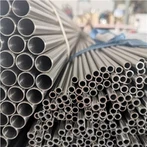
The name is Z-shaped steel because it looks like a "Z," and it does so for a reason.
The strucure of it allows for flexilbility instructural needs, easy integration with other materials, and excellent strength-to-weight ratios. Whether you're designingindustrial buildings, warehouses, or bridges, Z-shaped steel is a sure bet.
What exactly ls Z-shaped steel?
Z purlins or Z sections are rolled steel products with a profile resembling the letter "Z" They are also known as Z-shaped steel. Zpurlins are mainly employed to support roofing and cladding systems and are used primarily in structural frameworkgpplications. Because of its distinctive design, overlapping connections can improve structural stability and load distribution.
Z Shaped Steel Key Features
It is strong and has a lower weight for efficient construction
Usually treated or coated for use in harsh environments


Compatible for a wide variety of structural systems.
Reduces the cost of the material without compromising the performance
Load-Bearing Capacity: C-Shaped Steel vs. Z-Beam
Let's compare both types of steel to determine which option is best for your project regarding load-bearing capacity.
C-Shaped Steel Load-Bearing Capacity:
C-shaped steel should be able to handle large vertical loads. The open side of the 'Cc'is suitable for attaching to other structuralparts, making it an excelent choice for first walls, beams, trusses, etc. This makes the closed side of the 'C' extra rigid, providingsome protection aqainst deformation under load
C-shaped steel has its limitations. lt excels in torsional (twisting) loads but may not perform as adequately in its vertical loadsThat is particularly true in applications where the load is off-center and can cause the beam to twist or buckle.
Z-Beam Load-Bearing Capacity:
However, z-beams have a load distribution designed into them. The Z shape allows a beam to spread its weight evenlythroughout its length, reducing the stress on any one point. Z-beams are particularly effective in applications where the load isspread out, e.9., roofing systems aind long-span structures, because this makes them a favorable structural solution.
The Z-beam is also compact and can maintain its strength with less material, making it sometimes cheaper. While Z beams areintense for load distrilbution, they may not be as strong or sturdy as C-shaped steel in resisting heavy vertical loads and torsiondiforces.
Advantages of Z-Shaped Steel in Structural Systems
● High Load-Bearing Capacity
Due to its geometry, z-shaped steel is ideal for supporting roofs, walls, and floors in large structures because of its high load-carrying capacity.
● Lightweight Construction
Being structural steel shapes, Z shapes are lightweight and have lower transportation and installation costs than other shapes.
This also makes it easier for them to handle on-site.
● Flexibility and Versatility
A single Z-shaped steel component can construct both simple sinale-span and intricate muifi-span framework arangementsIts ability to overlap makes Z-shaped steel the perfect material for building seamless structures.
● Cost-Effective Solution
The strength-to-weight ratio enables cost reductions through minimal material utilization while maintaining structural integrity.
● Resisting Environmental Conditions
Z-shaped steel coated or galvanized resists corrosion and is suitable for outdoor and industrial applications where moisture orchemicals are commonplace.
Our address
Room 4107, Runfeng Building, Sanqiao New Street, Weiyang District, Xi'an City, Shaanxi Province
Phone Number
+86 15769214734











